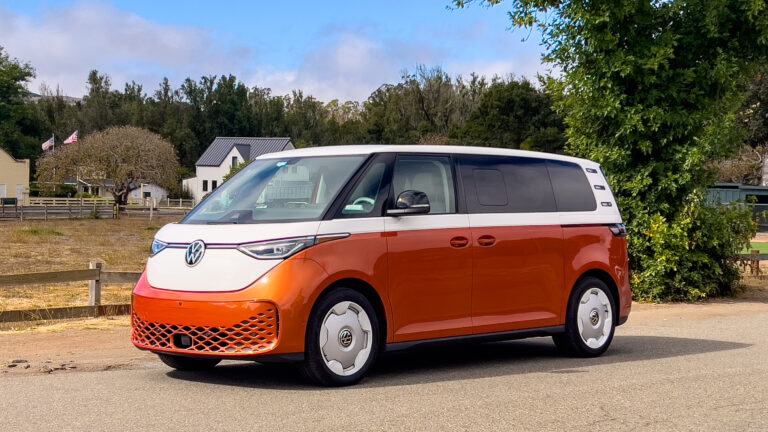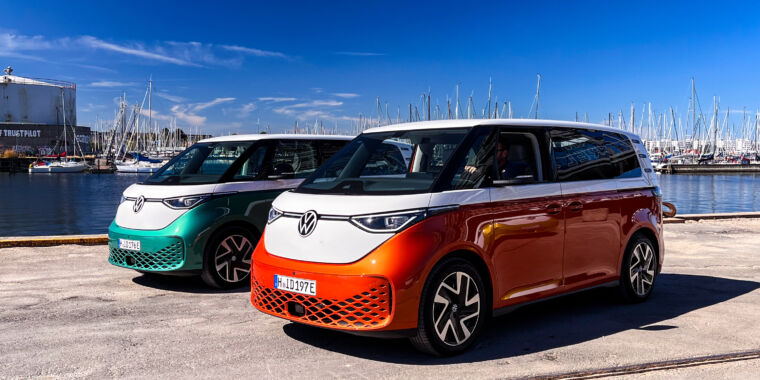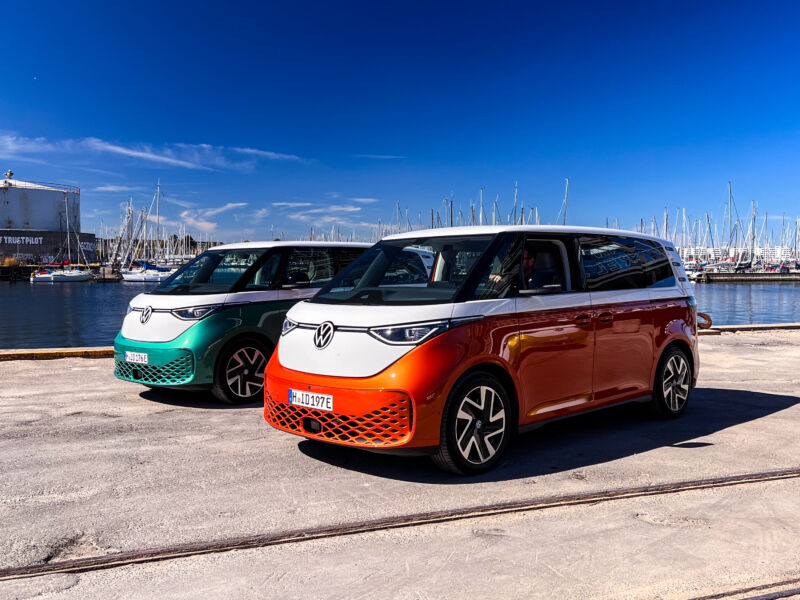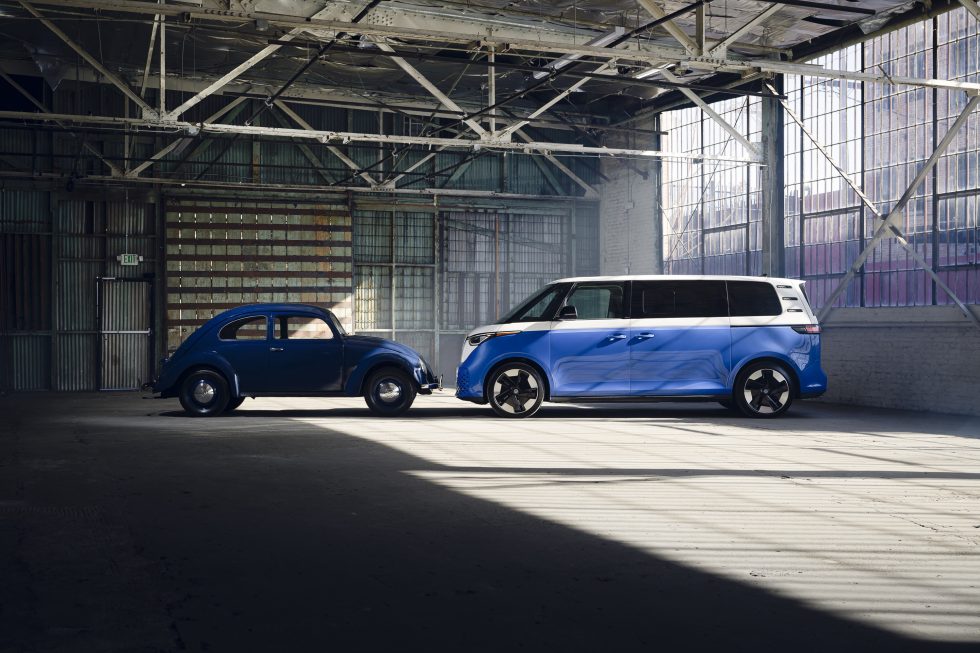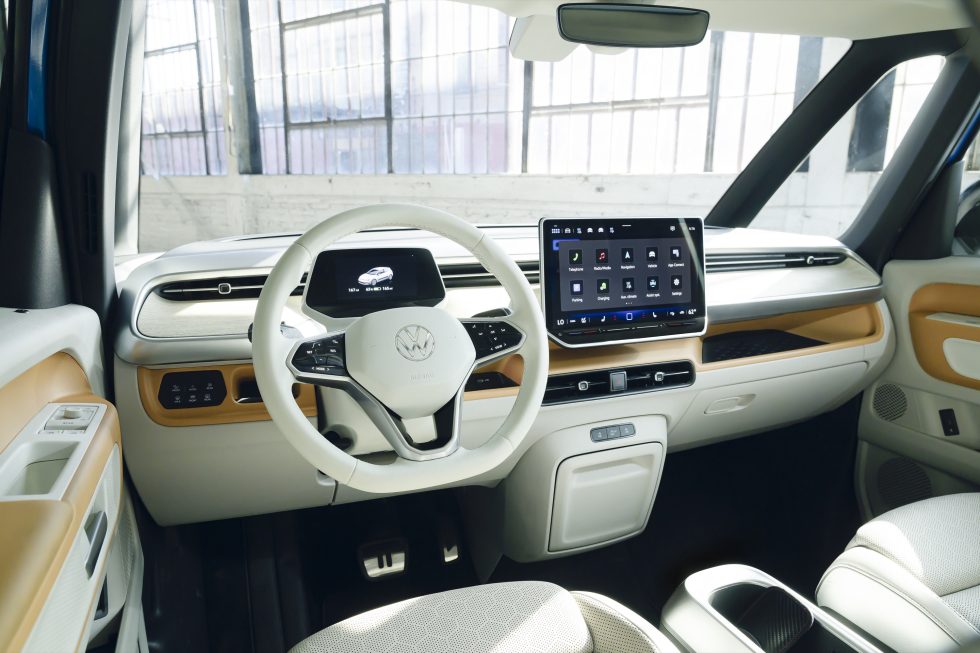The 2025 VW ID Buzz electric bus delivers on the hype
Perched in the driver’s seat, I’m not sure why you would need to be, anyway. Nothing about the Buzz’s driving style demands you rag it through the corners, although the car coped very well on the very twisty sections of our route up the shore of the Tomales Bay.
Like last week’s Porsche Macan, the single-motor model is the one I’d pick—again, it’s the version that’s cheaper, lighter, and has a longer range, albeit only just. And this might be the biggest stumbling block for some Buzz fans who were waiting to push the button. With 86 kWh useable (91 kWh gross), the RWD Buzz has an EPA range estimate of 234 miles (377 km). Blame the frontal area, which remains barn door-sized, even if the drag coefficient is a much more svelte 0.29.
Fast-charging should be relatively fast, though, peaking at up to 200 kW and with a 26-minute charge time to go from 10 to 80 percent state of charge. And while VW EVs will gain access to the Tesla supercharger network with an adapter, expect 2025 Buzzes to come with CCS1 ports, not native NACS for now.
I expect most customers to opt for all-wheel drive, but again, American car buyer tastes are what they are. This adds an asynchronous motor to the front axle and boosts combined power to 335 hp (250 kW). VW hasn’t given a combined torque figure, but the front motor can generate up to 99 lb-ft (134 Nm) together with the 413 lb-ft from the rear. The curb weight for this version is 6,197 lbs (2,811 kg), and its EPA range is 231 miles (376 km).
It’s a bit of a step up in price, however, as you need to move up to the Pro S Plus trim if you want power for both axles. This adds more standard equipment to what is already a well-specced base model, but it starts at $67,995 (or $63,495 for the RWD Pro S Plus).
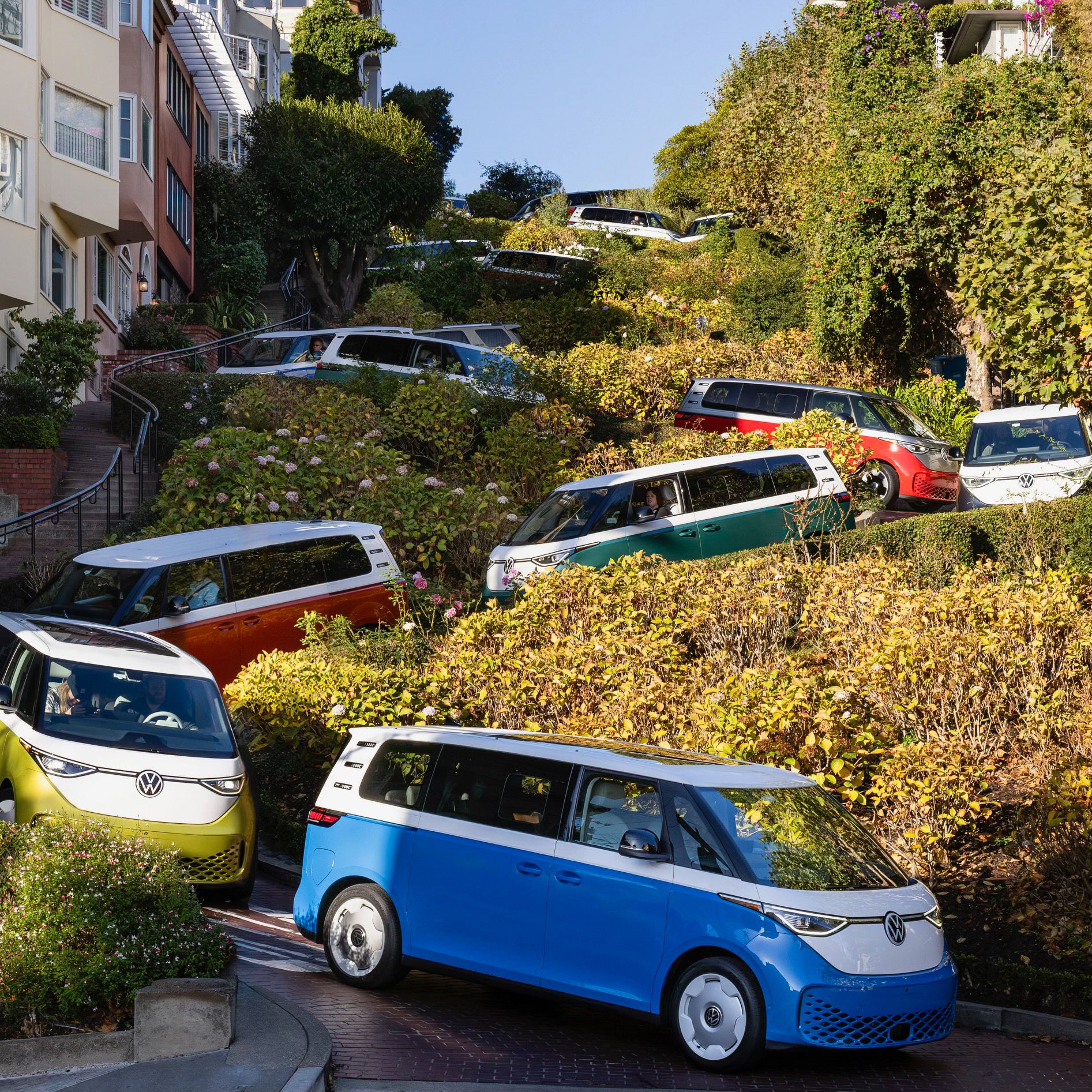
I was driving the lead Buzz on the day we drove, but this photo is from the day before, when it wasn’t gray and rainy in San Francisco. Credit: Volkswagen
While I found the single-motor Buzz to be a more supple car to drive down a curvy road, both powertrain variants have an agility that belies their bulk, particularly at low speed. To begin our day, VW had all the assembled journalists re-create a photo of the vans driving down Lombard St. Despite a very slippery and wet surface that day, the Buzz was a cinch to place on the road and drive slowly.
The 2025 VW ID Buzz electric bus delivers on the hype Read More »
